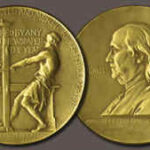“Sufi and Bhakti Movement”
- The Medieval period is considered as an age of great cultural synthesis in India and during this period a new phase of cultural development was initiated.
• The Turks and Mughals introduced fresh ideas and helped in giving rise to new features in the areas of religion, philosophy and ideas.
• The synthesis between different cultures gave birth to new philosophical and religious traditions, ideas.
“SUFISM”-
- Sufism or tasawuf is the name for various mystical and movements in Islam.
• It aims at establishing direct communion between god and man through personal experience of mystery which lies within Islam.
• Every religion gives rise to mystical tendencies in its fold at a particular stage of its evolution. In this sense, Sufism was a natural development within Islam based on the spirit of Quaranic Piety.
• The Sufis while accepting the Shariat did not confine their religious practice to formal adherence and stressed cultivation of religious experience aimed at a direct perception of god.
• There developed a number of Sufi orders of silsilah in and outside India. All these orders had their specific characteristics. However, there were a number of features which are common to all Sufi orders.
• Sufism stressed the elements of love and devotion as effective means of the realization of God. Love of God meant love of humanity and so the Sufis believed service to humanity was tantamount to service to God.
• In Sufism, self discipline was considered an essential condition to gain knowledge of God by sense of perception.
• While orthodox Muslims emphasise external conduct, the Sufis lay stress on inner purity.
• While the orthodox believe in blind observance of rituals, the Sufis consider love and devotion as the only means of attaining salvation.
• According to Sufis one must have the guidance of a pir or guru, without which spiritual development is impossible.
• Sufism also inculcated a spirit of tolerance among its followers.
• Other ideas emphasised by Sufism are meditation, good actions, repentance for sins, performance of prayers and pilgrimages, fasting, charity and suppression of passions by ascetic practices.
“Growth of Sufism in Islamic World “-
- Sufism began to acquire the form of an organised movement with the establishment of the Turkish rule under the Ghaznavis and then under the Seljuqs in various parts of central Asia and Iran in the later 10th and 11th centuries.
• The period marks the development of two parallel institutions in the Islamic world – the Madarasa system(seminary, higher religious school) in its new form as an official institution of orthodox Islamic learning and the Khanqah systemas an organized, endowed an permanent centre for Sufi activities.
• Another salient feature of Sufism during this period was the emergence of Sufi poetry in Persian.
• While Arabic literature on mysticism is in prose, Persian literature is in poetry.
• Sufi poetry in Persian in the form of narrative poems (mannavis) reached its peak during the 12th and 13th centuries.
• Al-Ghazzali was the most outstanding sufi author.
• One of the most authentic and celebrated manual of sufism was KashfulMahjub written by Al-Hujwiri.
“Sufi movement in India “-
- The Sufi movement in India commenced in the 11th century A.D. Al Hujwiri, who established himself in north India was buried in Lahore and regarded as the oldest Sufi in the sub-continent.
• Among the important Sufi Orders in the history of Medieval India were those of the Chishtitiya, Suhrawardiya, Qadiriya and Naqshbandiya.
• Chisti and the Suhrawardisilsilahs were popular during the Sultanate period.
• The Suhrawardis were active in Punjab and Sindh while the Chishti’s were active in Delhi, Rajasthan and parts of the western Gangetic plains. By the end of the sultanate period Chishti’s spread to the eastern regions of the Gangetic plain (Bihar and Bengal) and into the Deccan.
• During the medieval period the Sufis played an important role in interpreting and elaborating on Islamic theological concepts like WahdatulWujud (unity of being) and also encouraged the development of practices like Ziyarat (the practice of visiting tombs).
“The ChishtiSilsilah” –
- The Chisti Order was established in India by MuinuddinChishti who moved to India after the invasion of Muizzuddin Muhammad Ghori and subsequently to Ajmer in 1206.
• The fame of KhwajaMuinuddin grew after his death in 1235.
• His grave was visited by Muhammad Tughlaq after which the mosque and dome were erected by Mahmud Khalji of Malwa in the fifteenth century.
• The patronage of this dargah peaked after the reign of the Mughal emperor Akbar.
• The Chishtis believed in love as the bond between God and individual soul and tolerance between people of different faiths.
• They accepted disciples irrespective of their religious beliefs.
• They associated with Hindu and Jain yogi’s, and used simple language.
• The Chishti presence in Delhi was established by QutbuddinBakhtiyar Kaki who settled in Delhi from his homeland in Trans-oxiana in 1221. This was at the time of the Mongol invasions when there was a steady flow of people from central Asia fleeing from the Mongols.
• QutbuddinBakhtiyar Kaki presence in Delhi was a threat to the Suhrawardis who sought to force him to leave by leveling charges against him. The Sultan of Delhi, Iltutmish, dismissed these attempts eventually forcing the Suhrawardis to relent.
• The Chishtipirs laid great emphasis on the simplicity of life, poverty, humility and selfless devotion to God.
• The renunciation of worldly possessions was regarded by them as necessary for the control of the senses that was necessary to maintain a spiritual life.
• KhwajaMuinuddinChishti argued that highest form of devotion to God was to redress the misery of those in distress, fulfilling the need of the helpless and to feed the hungry.
• Chisti’s refused to accept any grant for their maintenance from the Sultans.
• The other important Chishti Baba FariduddinGanj-i-Shakar, established himself at Hansi (in Haryana) on the route between Multan and Lahore.
• NizamuddinAuliya, was the best known Chishti saint of the Sultanate period. He lived in the fourteenth century, during a period of political change and turmoil. During his lifetime he was witness to the establishment of the Khalji rule after the death of Balban and subsequently the establishment of the Tughlaq’s.
• There are numerous stories surrounding the life of NizamuddinAuliya, famous among them were stories of his confrontations with the Sultans of Delhi. The Khwaja is said to have maintained a strict policy of not involving himself with the various groups and factions of the Sultan’s court in Delhi earning him the respect of many.
• NasiruddinChiraghDehlvi was another of the Chishti saint of Delhi. He played an active role in the political affairs of the period.
• In the 13th century the Chishti Order was established in the Deccan by ShaikhBurhanuddinGharib.
• Between the 14th and 16th centuries many Chishti Sufis migrated to Gulbarga. This was accompanied with a change where some of the Chishtis began accepting grants and patronage from the ruling establishment.
• Muhammad Banda Nawaz was among the famous pirs in the region.
• The Deccan city of Bijapur emerged as an important centre for Sufi activity.
“The Suhrawardi Silsilah “-
- This Silsilah was founded by ShihabuddinSuhrawardi in Baghdad.
• It was established in India by BahauddinZakariya who founded the Suhrawardi Order, based in Mutan, which was under the control of Qubacha.
• BahauddinZakariya was critical of Qubacha and openly favored Iltutmish over his rival.
• BahauddinZakariya’s ways were different from that of the Chishtis.
• The Suhrawardis, unlike the Chishtis, accepted, maintenance grants from the Sultans.
• They believed that a Sufi should possess the three attributes of property, knowledge and hal or mystical enlightenment.
• Suhrawardi saints argued that this was necessary to ensure that they served the poor better.
• BahauddinZakariya stressed on the observance or external forms of religious belief and advocated a combination of ilm (scholarship) with mysticism.
• Practices like bowing before the sheikh, presenting water to visitors and tonsuring the head at the time of initiation into the Order that the Chishtis had adopted were rejected. After his death the silsilah continued to play an important role in Punjab and Sindh.
“Naqshbandi Silsilah “-
- In India this order was established by Khwaja Bahauddin Naqshbandi.
• From the beginning the mystics of this Order stressed on the observance of the Shariat and denounced all innovations or biddat.
• Sheikh BaqiBillah the successor to KhawajaBahauddinNaqshbandi settled near Delhi, and his successor Shaikh Ahmad Sirhindi attempted to purge Islam from all liberal and what he believed were ‘un-Islamic’ practices.
• He opposed the listening of sama (religious music) and the practice of pilgrimage to the tombs of saints.
• He opposed interaction with Hindus and Shias.
• He criticised the new status accorded by Akbar to many non-Muslims, the withdrawal of the Jizyah and the ban on cow slaughter.
• He believed that he was the mujaddid (renewer) of the first millennium of Islam.
• He maintained that the relationship between man and God was that between the slave and the master and not the relation of a lover and beloved.
• He emphasized the individual’s unique relation of faith and responsibility to God as creator.
• He tried to harmonize the doctrines of mysticism and the teachings of orthodox Islam.
“The QadriSilsilah “-
- The Quadiriyyasilsilah was popular in Punjab.
• Sheikh Abdul Qadir and his sons were supporters of the Mughals under Akbar.
• The pirs of this Order supported the concept of Wahdat al Wajud.
• Among the famous Sufis of this order was Miyan Mir who had enrolled the Mughal princess Jahanara and her brother Dara as disciples.
• The influence of the sheikh’s teachings is evident in the works of the princeDara.
• Shah Badakhshani another pir of this silsilah while dismissing orthodox elements, declared that, the infidel who had perceived reality and recognised it was a believer and that a believer who did not recognise reality was an infidel.
• During medieval period there was constant tension between the liberal and orthodox views in Islam.
• The sufis featured on both sides, while there were those like the Chishtis who held a liberal view and argued in favour of assimilation of local traditions there were others like Sheikh Abdul Haqq of the Qadiriyyasilsilah who held the view that the purity of Islam was being diluted.
• This Orthodox view was represented by the ulema that argued from the perspective of being upholders of the Shariat.
• The liberal opinion found its voice among many sufis who argued against the narrow definition of Islamic laws by the ulema.
“BHAKTI MOVEMENT “-
- In the ninth century Sankara started a Hindu revivalist movement giving a new orientation to Hinduism.
• His doctrine of Advaita or Monism was too abstract to appeal to the common man.
• Moreover, there was a reaction against the Advaita concept of Nirgunabrahman (God without attributes) with the emergence of the idea of Sagunabrahman (God with attributes).
• In the twelfth century, Ramanuja, who was born at Sriperumbudur near modern Chennai, preached Visishtadvaita.
• According to RamanujaGod is Sagunabrahman. The creative process and all the objects in creation are real but not illusory as was held by Sankaracharya. Therefore, God, soul, matter are real. But God is inner substance and the rest are his attributes. He also advocated prabattimarga or path of self-surrender to God. He invited the downtrodden to Vaishnavism.
• In the thirteenth century, Madhava from Kannada region propagated Dvaita or dualism of Jivatma and Paramatma. According to his philosophy, the world is not an illusion but a reality. God, soul, matter are unique in nature.
• Nimbarka and Vallabhacharya were also other preachers of Vaishnavite Bhakti in the Telangana region.
“Sankaracharya “-
- Sankaracharya was a Nambudiri Brahman born in Kaladi, Malabar.
• He was originally a worshiper of Shiva.
• He gave an entirely new turn to the Hindu revival movement by providing it with a solid philosophical background through the reinterpretation of ancient Indian scriptures, particularly the Upanishads.
• Sankaracharya advocated the philosophy of “Advaita” the monism of the Vedanta by giving a brilliant exposition to the entire range of the Vedic religions and spiritual thought.
• Having lost his father in his childhood, Sankaracharya become a sanyasi, while in his teens and began to roam around in search of true knowledge and wisdom.
• A genius by birth and intensely religious by outlook and social heritage, he received instruction in religious scriptures and philosophy at Kashi.
• Sankaracharya renewed and systematised Vedanta philosophy by stressing on its main principle of monism (evalaadvaita or absolute non-dualism).
• Sankaracharya started a vigorous campaign for the revival of Hinduism based on the solid foundation of Vedic philosophy and ancient Indian cultural tradition in order to check the growth of Buddhism and Jainism.
• He recognised the ascetic order of sanyasis on the pattern of Buddhist sangha and launched a campaign for the popularisation of Hinduism.
• He composed extensive commentaries on the Brahmasutra and chief Upanishad and traveled all around India to highlight the cultural unity of India.
• The mathas also began propagating and became the centre of Vedic religion.
• The mathas, among many, included Jaganathpuri in the east, Sringeri in the South, Dwarka in the west and Badrinath in the north.
• Sankaracharya was an orthodox Brahmin for whom the Vedic literature was sacred and unquestionably true.
• In order to harmonise the many paradoxes of Vedic tradition, he had to take recourse to a philosophy of “ double standard of truth” (already known in Buddhism). It meant that on the everyday level of truth, the world was produce by Brahma, and it went through an evolutionary process similar to that taught by the Sankhya school of philosophy. But on the highest level of truth, the whole universe including the God was unreal, i.e., the world in maya, an illusion and figment of imagination,
• Therefore, Shankarcharya believed that ultimately the only reality was the Brahman, the impersonal world soul of the Upanishads with which the individual soul was identical.
• Sankaracharya also believed that god and the created world was one and the difference which is evident is due to ignorance.
• According to him, the way to salvation was to realize by means of meditation and knowledge that god and the created beings were one and same. At the deepest level of meditation “nirvikalpasamadhi”, the complete identity between god and the individual is realized.
• It is the goal of everyone to know, realize, feel and display in action this identity. When this is accomplished all sufferings, birth and death cease. This identity has been termed as “sachidanand Brahman” by Sankaracharya.
• Sankaracharya’s ‘Brahman’ is not really different from the concept of ‘nirvana’ of Mahayana Buddhism.
• It is a fact which was well recognised by his opponents who called him “crypto-Buddhist.”
• However, Shankarcharya proved the Buddhist scholars wrong and was able to show that Buddhist metaphysics was only a poor imitation of the metaphysics of Sanatan dharma.
• The philosophy of Sankaracharya had far reaching consequences for the India society. For example, the monsticSankaracharya (mathas) which he established in the four corners of India served as an effective step towards the physical and spiritual unification of India.
• By the able use of arguments he reduced all the apparently self-contradicting passages of the Upanishads to a consistent system which has remained the standard of Hinduism to this day.
• Sankaracharaya passed away at KedarNath at the age of 32.
• Later on Ramanuja combined Sankara’sAdvaitavada with the VaishnavaPancharatra theology which claimed that Vishnu is the very foundation of the universe.
• The impact of Ramanuja’s writings and his long service as priest of the famous Vishnu temple at Srinangam made his ideas widely known among the Vaishnavites and he is justly regarded as the founder of Srivashnavism.
• The Vedantic Philosophy of Sankaracharya was revived by Vivekanand in the second half of the 19th century.
“The Bhakti movement in North India “-
- The bhakti movement in the north included socio-religious movements that were linked to one of the acharyas from the south and is sometimes seen as a continuation of the movement that originated in the south.
• Though there were similarities in the traditions of the two regions, the notion of bhakti varied in the teachings of each of the saints.
• The Nirguna’s like Kabir rejected the varnaashrama and all conventions based on caste distinction and championed new values, helping the emergence of new groups and new unorthodox/protestant sects.
• The Saguna’s like Tulsidas on the other hand upheld the caste system and the supremacy of the Brahmins. They preached religion of surrender and simple faith in a personal god and had a strong commitment to idol worship.
“Monotheistic Bhakti “-
- Kabir was the earliest and most influential Bhakti saint in north India.
• He was a weaver and spent a large part of his life in Banaras.
• His poems were included in the Sikh scripture, the AdiGranth.
• Among those who were influenced by Kabir were Raidas, who was a tanner by caste from Banaras, Guru Nanak who was a Khatri from Punjab and Dhanna who was a Jat peasant from Rajasthan.
• There are similarities in the teachings of the various monotheistic Bhakti saints in North India.
• Most of the monotheists belonged to the low castes and were aware that there existed a unity in their ideas.
• They were also aware of each other’s teachings and influence and in their verses they mention each other and their predecessors in a manner suggesting ideological affinity among them.
• All of them were influenced by the Vaishnava concept of Bhakti, the Nathpanthi movement and Sufism.
• Their ideas seem to be a synthesis of the three traditions.
• The importance given to the personal experience of Bhakti saint with God was another common feature among the monotheistic bhakti saints.
• Nirguna bhakti and not saguna bhakti was what they believed in. They had adopted the notion of bhakti from Vaishnavaism but they gave it a nirguna orientation.
• Though they called God using different names and titles their God was non-incarnate, formless, eternal and ineffable.
• The Bhakti saints refused any formal association with the organized dominant religions of the time (Hinduism and Islam) and criticized what they regarded to be the negative aspects of these religions.
• They rejected the authority of the Brahmans and attacked the caste system and practice of idolatry.
• They composed their poems in popular languages and dialects spoken across north India which enabled them to transmit their ideas among the masses. It also helped their ideas to spread rapidly among the various lower classes.
“Vaishnava Bhakti “-
- In the 14th and early 15th centuries Ramananda emerged as a popular Vaishnava bhakti saint in north India.
• Though he was from the south he lived in Banaras because he considered it to be the link between the South Indian bhakti and North Indian Vaishnava bhakti traditions.
• He looked upon Ram and not Vishnu as the object of bhakti.
• He worshiped Ram and Sita and came to be identified as the founder of the Ram cult in north India.
• He like the monotheist bhakti saints also rejected cast hierarchies and preached in the local languages in his attempt to popularize the cult.
• His followers are called Ramanandis.
• Tulsidas also championed the bhakti cause.
• In the early 16 century Vallabacharya, a popular bhakti saint popularized the Krishna bhakti.
• Among those who followed Vallabacharya’sfootsteps were Surdas and Mira Bai.
• Surdas popularized Krishna cult in north India.
• Mirabai was a great devotee of Krishna and she became popular in Rajasthan for her bhajans.
• Tulsidas was a worshipper of Rama and composed the famous Ramcharitmanas, the Hindi version of Ramayana.
• The Vaishnava bhakti movement in Bengal was very different form its counterparts in north India and the south and was influenced by the Vaishnava bhakti tradition of the Bhagavatapurana and the Sahajiya Buddhist and Nathpanthi traditions. These traditions focused on esoteric and emotional aspects of devotion.
• In the 12th century, Jayadeva was an important bhakti saint in this tradition. He highlighted the mystical dimension of love with reference to Krishna and Radha. Chaitanya was a popular bhakti saint from the region; he was looked upon as an avatara of Krishna. Though, he did not question the authority of the Brahmans and the scriptures. He also popularized the sankirtan (group devotional songs accompanied with ecstatic dancing). With him the bhakti movement in Bengal began to develop into a reform movement with the notions of caste divisions that came to be questioned.
• In Maharashtra the bhakti movement drew its inspiration from the Bhagavatapurana and the Siva Nathpanthis. Jnaneswar was a pioneer bhakti saint of Maharashtra. His commentary on the Bhagavad Gita called Jnanesvari served as a foundation of the bhakti ideology in Maharashtra. Arguing against caste distinctions he believed that the only way to attain God was through Bhakti. Vithoba was the God of this sect and its followers performed a pilgrimage to the temple twice a year. The Vithoba of Pandarpur became the mainstay of the movement in Maharashtra.
• Namdev (1270–1350) was another important bhakti saint from Maharashtra. While he is remembered in the north Indian monotheistic tradition as a nirguna saint, in Maharashtra he is considered to be part of the varkari tradition (the Vaishnava devotional tradition).
• Some of the other important bhakti saints of Maharashtra were the saints Choka, Sonara, Tukaram and Eknath. Tukaram’s teachings are in the form of the Avangas (dohas), which constitute the Gatha, while Eknath’s teachings that were in Marathi attempted to shift the emphasis of Marathi literature from spiritual to narrative compositions.
“Importance of the Bhakti Movement “-
- The importance of the bhakti movement was very great.
• Various preachers spoke and wrote in the regional languages and thus, the bhakti movement provided an impetus for the development of regional languages such as Hindi, Marathi, Bengali, Kannada, etc.
• Through regional languages they made direct appeal to the masses. A
• s the caste system was condemned by the bhakti saints, the lower classes were raised to a position of great importance.
• The importance of women in society was also increased because the bhakti movement gave equal importance to them.
• Moreover, the bhakti movement gave to the people a simple religion, without complicated rituals.
• They were required to show sincere devotion to God.
• The new idea of a life of charity and service to fellow people developed.
“GURU NANAK “-
- The teachings and philosophy of Guru Nanak form an important part of Indian philosophical thought.
• His philosophy consists of three basic elements: a leading charismatic personality (the Guru), ideology (Shabad) and Organization (Sangat).
• Nanak evaluated and criticized the prevailing religious beliefs and attempted to establish a true religion, which could lead to salvation.
• He repudiated idol worship and did not favour pilgrimage nor accept the theory of incarnation.
• He condemned formalism and ritualism.
• He laid emphasis on having a true Guru for revelation.
• He advised people to follow the principles of conduct and worship: sach (truth), halal (lawful earning), khair (wishing well of others), niyat (right intention) and service to the lord.
• He denounced the caste system and the inequality it caused.
• He argued that the caste and honour should be judged by the acts or the deeds of individuals.
• He laid stress on concepts of justice, righteousness and liberty.
• His verses mainly consist of two basic concepts, Sach (truth) and Naam (name).
• The bases of the divine expression for him were formed by, the Sabad (the word), Guru (the divine precept) and Hukam (the divine order).
• He introduced the concept of Langar (a community kitchen).
• Guru Nanak identifies himself with the people or the ruled.
• Though the Sikh guru’s stressed on equality the social differentiation among the followers continued. It was only towards the end of the 17th century that Guru Gobind Singh reasserted the idea of equality.
• In 1699 Guru Gobind Singh attempted to resolve the differences among the various Sikh groups and created the Khalsa. This institution removed the masands as intermediaries. Thereafter every Sikh was to have a direct link with the Guru. To create a sense of unity among the Sikhs the Guru started some practices which were to be followed by Sikhs. These were initiation through the baptism of the double edged sword, wearing uncut hair, carrying arms, adopting the epithet Singh as part of the name.
• The idea of Guru Panth was another institutional idea that emerged during this period. It sanctified the collective authority of the KhalsaPanth, which equated the Panth with the Guru.
• Guru Nanak in his last days had nominated a successor and paid homage to him, this gave rise to the idea that the Guru and the Sikh were interchangeable.
• This created a problem for the institution of the Sangat (that was a collective body of the Sikhs) in which God was said to be present.
• When Guru Gobind Singh created the Khalsa he chose the panjpiyare (the five beloved) and requested them to administer the pahul (amritchakhha) to him.
• With this the difference between the Guru and the Khalsa was symbolically removed. Guru Gobind Singh is believed to have said that the Khalsa is his own roop (form).
• Guru Arjun compiled the Guru Granth Sahib.
• After the death of Guru Gobind Singh the tenth Guru the tradition of guru ended.
• It was believed that the spirit of the guru did not pass onto any successor but instead remained within “ShriGurugranth Sahib”.














